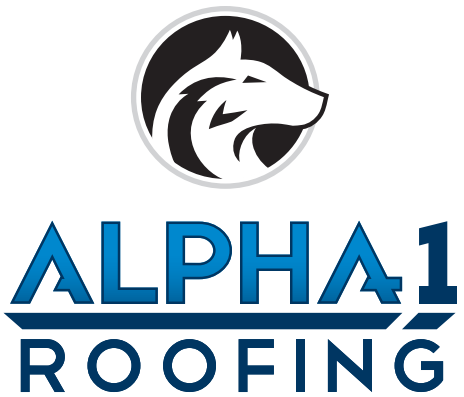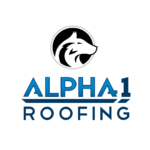As a homeowner, one of the most overlooked areas of your home is your attic. While it’s typically used for storage or even as extra living space, your attic plays a critical role in maintaining the overall health of your home. A significant issue many homeowners may face is poor roof airflow, which leads to ventilation problems in the attic. These issues can affect the comfort of your home and even cause long-term damage to your roof and other structures. In this article, we’ll explore the signs of ventilation problems and how they can affect your home.
What is Roof Airflow and Why Does It Matter?
Roof airflow refers to the movement of air through your attic. Proper ventilation is essential for regulating the temperature and moisture levels in this often-neglected part of your home. If your attic isn’t adequately ventilated, it can result in an accumulation of heat and moisture that can damage your roof, insulation, and other structural components of your home.
Proper roof airflow is typically achieved through a combination of intake vents (usually located at the eaves of the roof) and exhaust vents (placed near the ridge of the roof). This system allows cool air to enter while hot, stale air is pushed out. Without this balance, ventilation problems arise, leading to excessive heat buildup, moisture issues, and even mold growth.
Signs of Poor Roof Airflow and Ventilation Problems
- Excessive Heat in the Attic
One of the most noticeable signs of ventilation problems is excessive heat in the attic. During hot summer months, the temperature in a poorly ventilated attic can soar well above 100°F, even if the outside temperature is only in the 80s. This heat buildup occurs because hot air has no way of escaping, causing the attic to act like an oven. If you notice that your attic is unusually hot, it’s a clear indication that your roof airflow isn’t functioning properly.
- High Cooling Bills
If your attic is too hot due to ventilation problems, your HVAC system will have to work harder to cool the rest of your home. The heat trapped in the attic can radiate down into the living spaces, making your air conditioning system inefficient. This results in higher energy consumption and increased cooling bills. If you’ve noticed a spike in your energy costs during the warmer months, it could be a sign of ventilation problems in your attic.
- Damaged Insulation
Proper attic ventilation helps regulate moisture and prevent condensation from forming in the insulation. If your attic suffers from poor roof airflow, moisture can accumulate, causing your insulation to become damp and less effective. Over time, this moisture can cause the insulation to deteriorate and lose its ability to keep your home cool in summer and warm in winter. If you notice that your insulation feels wet or is sagging, it’s a strong indication that there are ventilation problems in your attic.
- Roof Damage and Shingles Curling
Excessive heat in the attic can also lead to damage to your roof. When there is poor airflow, the underside of your roof can become too hot, causing shingles to warp or curl. This damage not only affects the appearance of your roof but can also lead to leaks and water intrusion. If you spot curled, cracked, or damaged shingles on your roof, it’s important to address any ventilation problems that may be causing the issue.
- Mold and Mildew Growth
Mold and mildew thrive in damp, warm environments. If your attic has poor airflow, moisture from the outside can become trapped, creating an ideal breeding ground for mold. If you notice a musty smell or see visible signs of mold or mildew in your attic, it’s likely due to ventilation problems. Over time, mold can spread throughout your attic and even into your living spaces, potentially causing health problems for you and your family.
- Ice Dams in Winter
In colder climates, poor roof airflow can also lead to the formation of ice dams during the winter months. When your attic is too warm due to ventilation problems, the heat causes the snow on the roof to melt. The melted water then refreezes near the eaves, forming ice dams. These ice dams can cause water to back up under your shingles and leak into your home. If you notice icicles hanging from the eaves or water stains on your ceiling, it could be due to poor attic ventilation.
How to Improve Roof Airflow and Fix Ventilation Problems
If you’ve identified any of the signs of poor roof airflow and ventilation problems in your attic, it’s essential to take action to correct the issue. Here are some steps you can take to improve your attic ventilation:
- Install or Repair Vents
Proper attic ventilation requires a balance between intake and exhaust vents. Intake vents should be located at the eaves of the roof to allow cool air to enter the attic, while exhaust vents at the ridge or peak of the roof allow hot air to escape. If your attic doesn’t have enough vents or if they are blocked, installing or repairing vents can significantly improve roof airflow and eliminate ventilation problems.
- Ensure Proper Insulation
In addition to improving airflow, ensuring that your attic is well-insulated can also help prevent heat buildup. Proper insulation can help keep your attic cooler in the summer and warmer in the winter, reducing the strain on your HVAC system. Make sure your insulation is dry and in good condition, and consider upgrading it if it has become worn or ineffective.
- Use a Powered Attic Fan
In cases where natural ventilation isn’t enough, a powered attic fan can help improve airflow. These fans are designed to pull hot air out of the attic, allowing cooler air to enter and helping to reduce the overall temperature. While powered attic fans can be an investment, they are a great solution for homes with significant ventilation problems.
- Schedule Regular Roof Inspections
Routine roof inspections are essential for identifying ventilation problems before they become severe. During these inspections, a professional roofer can check for signs of poor airflow, such as damaged vents, moisture buildup, or insulation problems. Catching these issues early can help prevent costly repairs down the road.
- Consider Roof Ventilation Upgrades
If your attic is still experiencing ventilation problems despite repairs, it may be time to consider upgrading your roof’s ventilation system. There are various advanced systems available, including ridge vents, soffit vents, and gable vents, which can significantly improve airflow and prevent further damage.
Ventilation problems in your attic can lead to a host of issues, from high energy bills to roof damage and mold growth. By understanding the signs of poor roof airflow and taking action to address ventilation problems, you can protect your home, reduce energy costs, and ensure a healthier living environment. Don’t ignore your attic’s ventilation – it plays a crucial role in the overall comfort and integrity of your home. If you’re experiencing any of the issues mentioned above, consider contacting a professional roofing company to assess your attic’s ventilation and provide solutions to fix any airflow problems.


